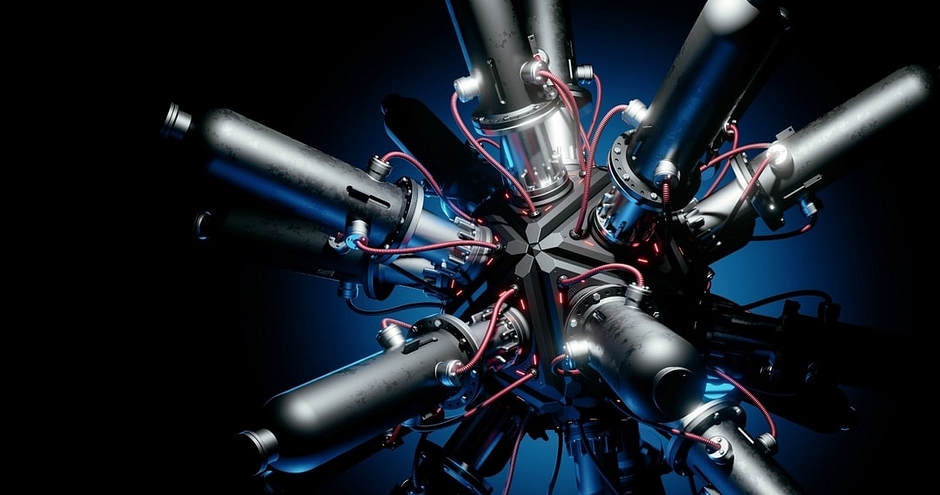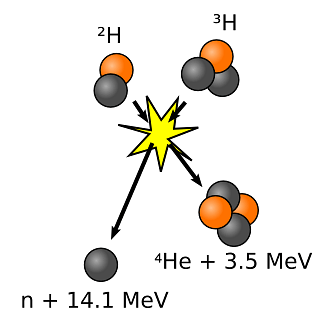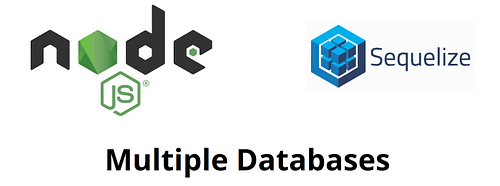How AI helps to finally let the fusion reactor become a reality

Google, TAE Technologies and the Optometrist Algorithm
In Marvel’s comic universe following the end of World War II Howard Stark tries to tap into the energy of the mystical “Tesseract” and develops the arc reactor — a technology he believes to hold the key to unlimited, sustainable energy and would make nuclear energy look like an AAA battery. However, the perfect reactor cannot be built without a certain theoretical element and he lacks the technology to synthesize it.
In the film “Iron Man”, his son Tony Stark builds a miniature version of the Arc Reactor when held hostage in an Afghan cave to power an electromagnet, which keeps deadly shrapnel from piercing his heart. Even this small reactor has a remarkable output of 3 GJ/s — as much as three times the average energy produced by a nuclear power plant.
As the reactor’s waste products threaten to poison him, Tony searches for new elements for the reaction. With the help of his father’s blueprints and the artificial intelligence JARVIS, he succeeds in building the perfect arc reactor and thus initiates the energy revolution [1].
How Fusion Works
What at first sounds like a far-fetched sci-fi story has its origin in real technical developments — the fusion reactor. Even at the beginning of the atomic age, scientists toyed with the idea of generating electricity through controlled nuclear fusion, but to this day there is still no fusion reactor that generates more energy than it consumes. Now, with the help of supercomputers and artificial intelligence (AI), this goal seems to be within reach.
Todays nuclear power plants work with nuclear fission — basically an uncontrolled chain reaction that splits heavier elements, like uranium, into smaller ones. The nuclear reaction taking place in fusion reactors works the other way round and is an every-day encounter for us as it forms the basis of how the sun and all the shining stars radiate energy:
Two hydrogen isotopes — deuterium and tritium — fuse together under high pressure and enormous temperatures to form a helium nucleus by releasing a neutron. Since the masses of the original products are greater than those of the reaction products, a so-called mass defect is created. Based on Einstein’s famous formula e=mc2 this mass defect is responsible for the subsequent release of energy [2]. A single gram of the fusion fuel theoretically provides as much energy as eleven tons of coal, is almost inexhaustibly available on earth, and produces only short-lived, weakly radiating atomic waste [3] — the (almost) perfect energy source.

The fusion reaction equation: Hydrogen isotopes deuterium (2H) and tritium (3H) fuse to form a helium nucleus (4He), releasing one neutron (n) and energy (3.5 MeV +14.1MeV). Source: Public Domain
So where do things get complicated? In short: In a fusion reactor plasma must be heated to over one hundred million degrees Celsius. And this is where the problems begin, since the particles’ collisions with the reactor walls cool them down immediately and the reaction comes to a quick end. To prevent this the plasma is enclosed by strong magnetic fields, an extremely complex task.
Modern fusion reactors have a large number of control parameters that depend to a great extent on the current state of the reactor, e.g. the changing state of the reactor walls. Thus, to generate optimal plasma requires the optimization of hundreds of non-linear and strongly interrelated parameters, which makes manual optimization of individual parameters impossible. So how can suitable parameter configurations be found and the plasma be maintained searing hot for as long as possible in order to create a stable source of energy?
The optometrist algorithm leads to better results
To answer this question, the American fusion start-up TAE Technologies has developed the “Optometrist” [4] algorithm in collaboration with tech-giant Google.
Similar to the way an optician provides a patient with two different lenses and asks which one gives him better vision, “Optometrist” shows a human expert two plasma configurations and their experimental results. The expert must then decide which of the two configurations has produced the better result. Based on these decisions, the algorithm learns to detect hidden patterns between parameters that humans cannot express explicitly. An optimization algorithm uses these patterns to search the high-dimensional parameter space for hard-to-find optima and to propose a new plasma configuration.

The Optometrist algorithm: In each iteration new test parameters are calculated to ignite a new plasma. An expert then compares the test with the current reference and decides which of the two is better and becomes the new reference. With the help of this information, the algorithm can calculate better and better parameters. Image by the author
The parameter space of the C2-U reactor from TAE Technologies has over 1000 dimensions — the search for an optimal parameter set is therefore comparable to the figurative needle in a haystack. To evaluate good plasma the duration of a stable state and the temperature of the ions are crucial. Before “Optometrist” joined the party, the plasma typically remained stable for a few milliseconds and the ion temperature decreased over time. With the help of the algorithm the researchers succeeded in discovering a previously unknown plasma behavior in which the temperature of the ions increases rapidly. For the first time ever, it was possible to generate a net heating power — where more energy is generated than consumed — in the fusion reactor. This result is all the more astonishing as the “Optometrist” algorithm only works on the basis of better-bad decisions and has no a priori knowledge of the control of plasma states [5].
Artificial Intelligence enables new innovations
The case of TAE Technologies and Google shows on the one hand that artificial intelligence can be used very impressively for problems that are unmanageable for humans due to the countless interrelationships of different parameters and the enormous amount of data. On the other hand it also becomes clear that an AI cannot generate knowledge out of nothing. Only through human input the system could learn to acknowledge a suitable plasma state for further reactions. As a matter of fact this property applies to all AI systems, since they are always based on human-generated data. The problem of multidimensional parameter optimization shown here is not only applicable to fusion reactors, but is omnipresent and has various other applications, such as developing new drugs [6], finding influential social media accounts for political campaigns [7] or planning new marine protected areas [8]. AI is therefore most correctly perceived as an enabler allowing us to explore an exciting range of innovations.
What happens with fusion technology?
While the use of sophisticated algorithms brought TAE Technologies an important step forward, there is still a plethora of technological advances needed to ever make a functional nuclear fusion power plant possible. The greatest hope for fusion technology currently lies in the international ITER project [9] — a research reactor to be completed by 2025 at the French nuclear research centre Cadarache. The aim is to prove by 2035 that it is possible to use fusion technology for efficient power generation. A 10-fold increase in the entered heating power needs to be achieved as a major milestone and Artificial intelligence could be of aid by e.g. detecting instabilities in the plasma early on [10].
Whilst we sadly can’t wait for Tony Stark to show up and provide us with all the answers to making fusion technology work, we are certainly seeing exciting technological leaps forward right now and a continuously improved understanding of how we efficiently use Artificial Intelligence to solve problems lies at the heart of it.
If you are generally interested in the topic of AI and its practical applications or want to know more about how data-driven solutions can remove existing blockers that keep you from taking your business to the next level then feel free to reach out to us.
References
[1] Arc Reactor, https://marvelcinematicuniverse.fandom.com/wiki/Arc_Reactor
[2] Kernfusionsreaktor, https://de.wikipedia.org/wiki/Kernfusionsreaktor
[3] What is nuclear fusion?, https://www.ipp.mpg.de/15047/kernfusion
[4] E.A. Baltz, E.Trask, M.Binderbauer , M. Dikosvky, H.Gota, R.Mendoza, J.C. Platt and P.F. Riley, Achievement of Sustained Net Plasma Heating in a Fusion Experiment with the Optometrist Algorithm (2018), Scientific Reports
[5] E.A. Baltz, E.Trask, M.Binderbauer, M. Dikosvky, H.Gota, R.Mendoza, J.C. Platt and P.F. Riley, Achievement of Sustained Net Plasma Heating in a Fusion Experiment with the Optometrist Algorithm (2018), Scientific Reports
[6] M. Segall, Multi-Parameter Optimisation in Drug Discovery (2011), Innovat Pharm Technol
[7] R. Chulaka Gunasekara ; Kishan Mehrotra ; Chilukuri K. Mohan, Multi-objective optimization to identify key players in social networks (2014), IEEE/ACM International Conference on Advances in Social Networks Analysis and Mining (ASONAM 2014)
[8] Alan D. Fox, David W. Corne, C. Gabriela Mayorga Adame, Jeff A. Polton, Lea-Anne Henry and J. Murray Roberts , An Efficient Multi-Objective Optimization Method for Use in the Design of Marine Protected Area Networks (2019), Front. Mar. Sci.
[10] M. Lindinger, KI hält Fusionsfeuer am Brennen (2019), faz.net


